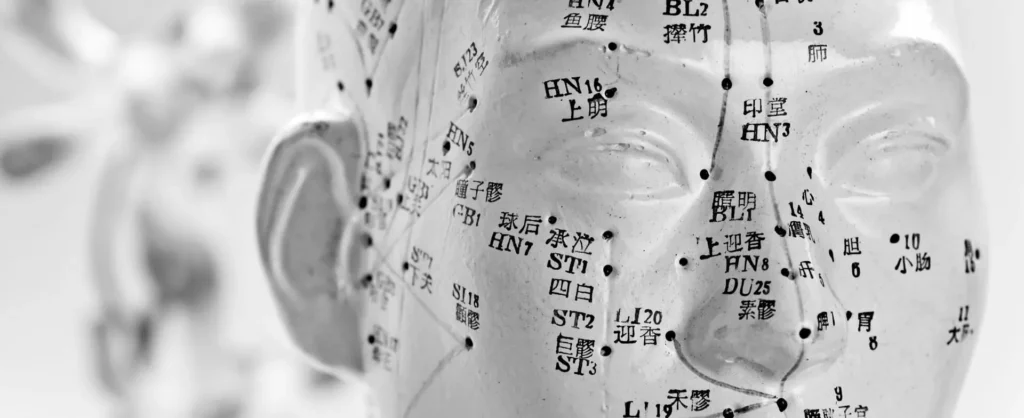The word “meridian” is thought to originate from early French translations of Chinese medical theory encountered when the French colonized Vietnam, although the word “channel” is increasingly used. The word is taken from a combination of two Chinese characters: jing and luo. As Chinese is a pictorial and contextual language we can only make approximate translations but those commonly used include:
Jing – “to go through”, “a thread in fabric”, “a geographic term describing a channel of water”
Luo – “a net”, “something that connects or attaches things together”

In understanding the importance of the jingluo it is necessary to distinguish the Chinese and Western understanding of the body and vital organs. In Chinese medicine and jingluo theory, the organs described are not the same as our usual understanding; they are our best translation of Chinese concepts that include emotions and many other functions of the body. It is important not to self-diagnose a problem with your health due to problems or tension in your body or the associated Chinese organ. Both Western and Chinese diagnoses are complex matters and if you have any concerns about your immediate health you should consult with your doctor and secondarily with a Chinese health professional.
Every Qigong exercise we practise moves the qi in the body in many subtle ways. My teacher has specifically advised not to try to move qi forcefully with the mind. Instead he has always emphasised feeling the subtle physical sensations in the body first and allowing the feeling to grow naturally with the movement. Become familiar with this subtle map and it can significantly change your experience of Qigong.

In Chinese medicine the jingluo describe many layers of the human body. They include the relationships and behaviours between various cutaneous regions (skin), sinews, muscles, blood and qi flow through the body. If you look closely at the diagrams you will notice that the body is effectively divided into inside (yin) and outside (yang). In general, where the yin meridians flow the body is softer, fleshier and more protected from the elements: for example the inside of the arms and legs. The areas where the yang meridians flow are generally harder, protected by hair and more exposed to the elements: for example the back and the outside of your arms.
The meridians each have a direction of flow. Imagine a person standing upright with the hands reaching straight up, palms forward:
The yin channels of the arms flow from the torso to the finger tips.
The yang channels of the arms flow from the finger tips to the neck and head.
The yang channels of the legs start in the head and flow down to the feet.
The yin channels of the legs flow upward from the ground to the torso.

The combination of these channels and regions creates a picture of the body similar to a system of rivers and streams that take the qi between the organs, from the interior to the exterior of the body, from the head to the feet and vice versa.
These diagrams are of the primary channels, if you like the major rivers in the meridian system. Keep in mind, however, that there are also many smaller streams and even tiny nets of channels operating throughout the body, which you can learn about (and feel) as you go even further into your practice.
